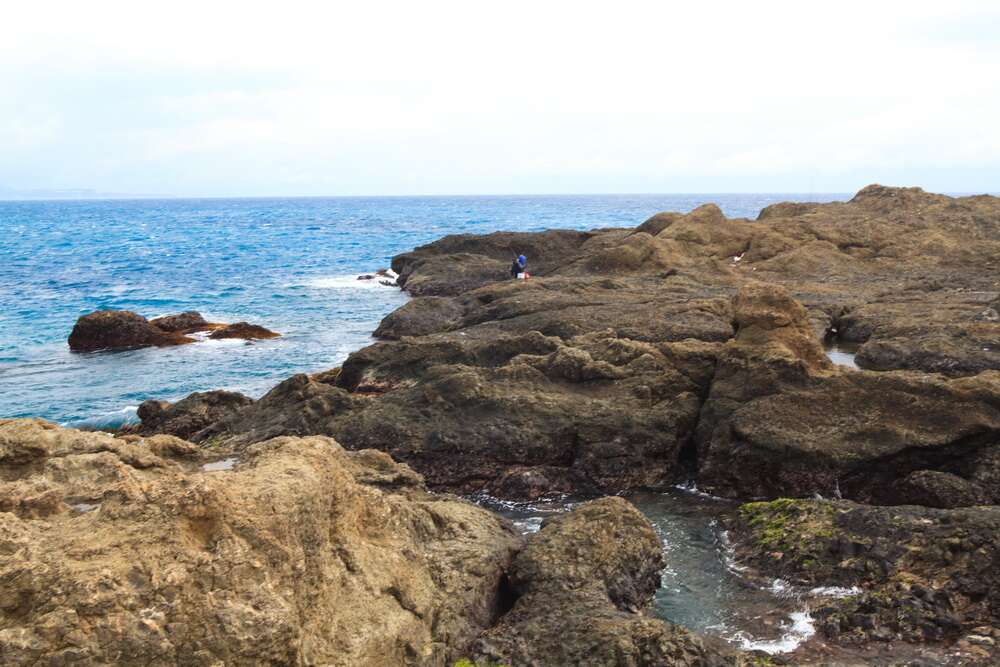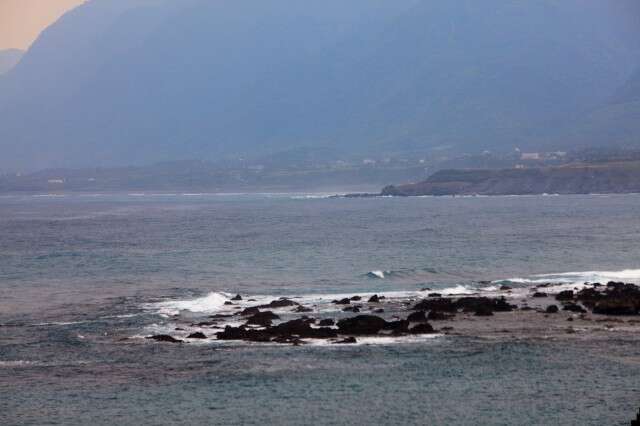The first whale watching cruise in Taiwan, the Seawhale Ocean Tours, set sail in Shiti Harbor in 1997. In 2003, Shiti Harbor was recognized internationally as the fastest developing area for whale watching. There are two whale watching harbors within the jurisdiction of the ECNSA Headquarters: Hualien’s Shiti Harbor and Taitung’s Chenggong Harbor. Both harbors are also charming fishing villages; Shiti Harbor was even voted one of the top ten charming fishing harbors in 2011. There are nearly 90 species of whales and dolphins in the world and Taiwan has recorded 31 species, over one third of the total global species. With the great diversity and the east coast being the main area where whales and dolphins reside (over 20 different species), the chances of seeing whales and dolphins is between 80 to 90 percent. Frequently seen species include Risso’s dolphins, spinner dolphins, pantropical spotted dolphins, Fraser’s dolphins and bottlenose dolphins to name only a few. Visitors may even spot killer whales, sperm whales, pilot whales, false killer whales and other large whale species if lucky. Besides searching for whales and dolphins, some cruise captains will also give a tour of landmarks along the coast, highlighting geological wonders and sharing the lifestyle and culture of the fishermen and aboriginals in the area, providing a comprehensive ocean tour.
Maritime Ecological Tours
Because the Kuroshio current flows through the Pacific, the currents bring a diverse range of migratory fish. On the maritime ecological tours, visitors may come across dolphin fish, swordfish, bonito, flying fish, and more. Visitors may also have the opportunity to see local fishermen at work, using techniques such as dart fishing, long line fishing, fixed net fishing and other fishing equipment. Birdwatching enthusiasts will have the chance to see a variety of birds, including boobies, shearwaters and Bulwer’s petrels, just to name a few. Besides the rich eco-system, observing the landscape of Taiwan from the Pacific is truly a visual treat. The majestic ocean eroded landscape, the stacked mountain ranges, the Xianjen valley of Sanxiantai, the guardian owl rock of Shiti Harbor and the locals collecting shellfish along the coral coast, all combine to form a truly amazing view. However, the most awe-inspiring aspect of the landscape is the endless blue of the pacific, intoxicating visitors with its natural beauty. Every detail is a highlight on every whale watching cruise.
The Cetacean Family
Whales and dolphins are medium to large sea mammals which use lungs to breathe. When whale watching on the ocean, exposed dorsal fins, splashes in the water or blowhole sprays are clues to the presence of whales and dolphins. Whales and dolphins are both part of the Cetacean family of sea mammals; this includes animals larger than 4 meters (whales) and animals smaller than 4 meters (dolphins). Therefore, the term whale watching includes the observation of both whales and dolphins. Whales are majestic due to their large size, while dolphins are fascinating due to their agile movements through the water and their natural large pack movements. For example, Fraser’s dolphins are often spotted in groups of hundreds or even thousands, and spinner dolphins are known for their graceful twirl. Every time a cruise comes across these animals, gasps and shouts of excitement can be heard throughout the ship.
Information
Season
The peak season for whale watching in Taiwan is from May to September annually. Each cruise company generally offers two to four cruises per day, from 8 am to 4 pm. Every cruise lasts around 2 to 3 hours and will cost between 800NTD to 1000NTD. Most cruise operators will offer pre-cruise briefings to provide visitors with a deeper understanding of these amazing creatures.
Harbors and Carrying Capacity
In Shiti Harbor, there are currently 3 whale watching ships, which can carry up to 147 people. In Chenggong Harbor, there is currently only 1 whale watching ship, which is capable of carrying 46 people. Most ships have a spearfishing bowsprit on board, a spiritual symbol of traditional winter fishing. If the conditions are optimal, visitors can even sit on the bowsprit and enjoy the experience of having dolphins swim by their feet.
Whale Watching Mark

Since 2003, supported by the Fishery Agency, the Taiwan Cetacean Society has been awarding their mark to cruise companies that uphold their standards; it is certified every 3 years. Certified-companies offer higher quality services regarding the briefings, treatment of the cetaceans, ecological preservation and more. You are recommended to choose one of these cruise operators when searching for a whale-watching tour.
Rules Regarding Wild Whale Watching
- Approach gently. Cetaceans are the master of the ocean, so as guests, we must approach gently and with a friendly attitude. Cruises should approach slowly to reduce the chance of startling the animals. Avoid approaching from directly behind these animals; it is best to approach them from the right or left of their rear.
- Friendly observation. Whales and dolphins should first be observed from a distance to evaluate the appropriate way to interact. If the animal is resting, foraging or travelling, avoid entering their space, disrupting their normal behaviors or splitting the pack. If it is a mother with her child, avoid separating the pair and keep an appropriate distance. When observing these animals, the ship should be moving at a reduced speed.
- Disengage at an appropriate time. Do not follow the same pack for more than 30 minutes and avoid having more than 3 ships following the same pack at a time.
- Do not feed or litter. Cetaceans are wild animals that feed on fish in the sea. Food or refuse thrown into the sea does not help attract cetaceans and will destroy the ocean’s ecosystem.
- Go with the flow. Wild cetaceans are not domesticated animals. The chance of seeing them is not guaranteed. Therefore every cruise should be taken with an open mind because every trip is unique, even if visitors can only catch a glimpse of the cetaceans.
- The reason these rules are set is to minimize interference with the natural habits of the whales and dolphins. To ensure they continue to appear on the east coast, we must preserve their natural environments.
Shop Information
Recommended Itinerary
Shiti harbor (Two-day Tour)
Day1
Downtown Hualien → Niushan Huting → Shiti Harbor whale watching → Shiti Harbor night squid fishing → Accommodation at Shitiping B&B or camping area
Day2
Shitiping scenic area → Yuedong Recreational Area → Jiqi Beach → Downtown Hualien
Chenggong harbor (Two-day Tour)
Day1
Downtown Taitung → Daluan aboriginal lunch→Duli Visitor Center → Chenggong Harbour whale watching → Historical site of Guang Heng Fa Shop / Card Church →Dinner at Chenggong Township → Accommodation at Chenggong Township
Day2
Sanxiantai morning walk → Shark Museum and lunch → Chenggong fishing village tour → Fish market auctions → Fushan fish reserve → Downtown Taitung


